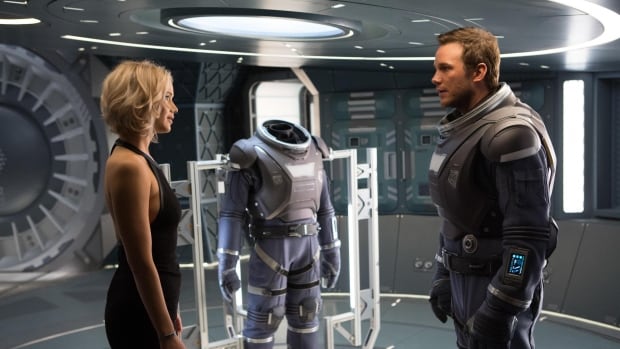A public contest has opened to design a so-called generation spacecraft that could take humans to distant planets beyond our solar system. This kind of spacecraft — while still conceptual — has generation in the name because it would take multiple lifetimes to cross the unimaginable gulfs of interstellar space.
During that long journey, the original occupants would grow old and die, but their children would take over running the ship. By the time they reach another star system, the great-great-great-grandchildren of the original pioneers would take the first steps on an alien planet.
Project Hyperion is an open competition run by an international think tank of experts in architecture, engineering, anthropology and urban planning. It’s offering $10,000 US in prizes, shared by the top three designs of a spaceship capable of carrying up to a thousand people to a distant star system, along with ideas on how to maintain a peaceful, orderly community for the duration of the voyage.

Of course, we’re nowhere near having the technology that could propel a starship so far.
Our current rockets, the fastest machines we build, are remarkably slow when it comes to deep space exploration. It takes us three days just to deliver humans to the moon, a walk around the block compared to a journey outside of our solar system.
Our most distant object ever, Voyager 1, is currently in interstellar space more than 24 billion kilometres from Earth. That may sound far, but it’s taken 47 years to reach that distance, and at that pace, it would like tens of thousands of years before the Voyager came close to another star in our galaxy.
The contest puts aside many technical problems, including the propulsion system, power system and basic life support. Instead, it’s focused on the design of the habitat and society. The premise is that the starship’s voyage will take 250 years to get to its unspecified destination.
Similar ideas have been depicted in science fiction, such as the 2016 movie Passengers and Arthur C. Clark’s 1973 novel, Rendezvous with Rama. Those stories feature enormous ships where most crew members are in hibernation and the ship flies automatically.

This new design challenge involves colonists who would not be in suspended animation for the duration of the trip. Instead they would live their lives aboard the ship, having children who in their turn take over as the new crew when their parents die. This raises the problem of the crew having to live together in a confined space for multiple generations.
We’ve had limited pictures of the kind of challenges a crew like that might face. In 1991, eight people entered Biosphere 2 in a two-year experiment to live in a large-scale closed environment designed to simulate a self-sustaining colony in space.
Situated north of Tuscon, Arizona, the habitat was meant to be completely self-contained. The only energy allowed in was sunlight. The glass-covered habitat contained a miniaturized rainforest, ocean with coral reef, desert and living quarters. The crew grew their own food, and plants were intended to scrub the air of carbon dioxide and provide oxygen.
Not long into the project, though, the crew found carbon dioxide levels were rising and oxygen levels falling from the normal 20 per cent down to a dangerously low 14 per cent, which became bad for their health. It turned out their composting and soil were releasing more CO2 into the sealed environment than the plants could absorb, so oxygen had to be brought in from the outside.
This was not considered a failure, but rather a deeper understanding of how difficult it is to replicate the natural biosphere of the Earth. And that experiment was done with the benefit of bright Arizona sunshine, and all its plant-cultivating and energy-generating superpowers. In interstellar space, the sun is just another star in a permanently dark sky.

Beyond the ecological issues, managing the human factors in a multi-generational closed environment may be the greatest challenge of all.
At a basic level, the ship itself would need to provide everything the inhabitants need: breathable air, water, food, places to live, as well as be large enough for people to spread out and get away from each other. That means they would need recreational spaces, green spaces, entertainment centres — the types of places people like to visit when they’re not working.
Unfortunately, whenever large groups of people get together for long periods of time, differences of opinion or personality conflicts tend to crop up.
In his science fiction novel Red Mars, author Kim Stanley Robinson described the first Martian colony where the inhabitants became divided over those who wanted to transform the red planet into a more Earth-like world and those who wanted to preserve the natural features of Mars. This led to conflict and violence.
On an interstellar starship, similar divisions could arise with a possibility of a mutiny where a group decides the whole endeavour is a waste of time and attempts to turn the ship around and head back to Earth.
These are the types of issues the contest is asking entrants to solve.

One of the major elements of the contest is to plan how the space travellers’ society would be organized, governed and policed. Teams are to consider what languages would be spoken, what cultures represented and what form the family structure would take.
And they will have to imagine how that society would be maintained by generations of children born in that environment, who would never know planet Earth, and may or may not maintain interest in their ancestral world and its traditions.
Would you join a one-way journey to the stars, a voyage where you would not reach the destination yourself?
The contest, should you be interested in having a go, is open now with the first deadline on Feb. 2, 2025. You’d need a team including at least one architectural designer, one engineer and one social scientist, such as anthropologist or sociologist.
If viable solutions are found to the engineering, ecological and social complexities in space, perhaps the lessons learned could be applied to spaceship Earth, where many of these problems continue to persist.







